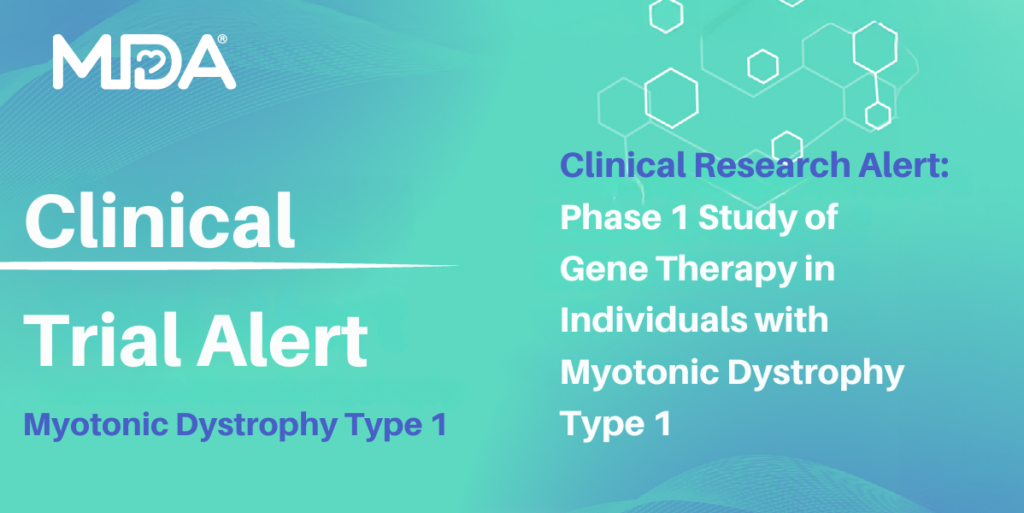
The Case for Newborn Screening
By Chris Anselmo | Monday, July 15, 2019
Newborn screening allows babies born with life-threatening diseases to be treated before they show any signs of disease, which can lead to improved outcomes and maybe even a life free of symptoms.
As therapies for neuromuscular diseases progress through the clinical pipeline and get approved by the U.S. Food and Drug Administration (FDA), the importance of newborn screening is heightened. Currently, it is recommended that states screen for Pompe disease and spinal muscular atrophy (SMA), and a screening for Duchenne muscular dystrophy (DMD) could be on the horizon. But despite these advancements, some states face implementation challenges due to scientific, economic and operational considerations. This was the focus of the newborn screening session at the MDA Clinical & Scientific Conference.
Why Does Newborn Screening Matter?
“Time is motor neuron,” said Richard Finkel, M.D., a pediatric neurologist at Nemours Children’s Health System in Orlando, Fla., and a presenter during the session. Even for children who are diagnosed with SMA types 3 and 4 (milder forms of the disease), any delay in treatment can have significant impact down the line. “Why wait for children to become symptomatic?” Dr. Finkel asked. “Children cannot reclaim lost motor neurons.”
Newborn screening can provide the earliest possible diagnosis and intervention for life-threatening conditions. It’s critically important because, in many cases of progressive, degenerative diseases, what is lost cannot be regained.
The States of Screening
The Recommended Uniform Screening Panel (RUSP) is a list of disorders for which the U.S. Department of Health and Human Services (HHS) recommends states screen. However, HHS does not mandate states’ screening policies. Presenters at the conference provided insight into the RUSP standings for neuromuscular disease screenings.
Barry Byrne, M.D., Ph.D., director of the Powell Gene Therapy Center at the University of Florida, updated the audience on the implementation of newborn screening for Pompe disease, which has had an FDA-approved therapy, Sanofi-Genzyme’s Lumizyme, on the market for several years. Pompe was added to the RUSP in 2015, and the screening has been gradually adopted by states throughout the country. Dr. Finkel discussed the recent success of SMA’s addition to the RUSP, explaining that 17 states currently are in some phase of SMA screening.
Yet according to the speakers, even with both conditions officially on the RUSP, state-by-state adoption is hampered by challenges that include legislative delays and funding issues.
Peter Kang, M.D., a pediatric neurologist at the University of Florida, addressed current efforts to add DMD to the RUSP. Even though meaningful treatments for DMD are progressing through clinical development, it will be challenging to add the disease to the RUSP. Success faces issues such as the proven efficacy of DMD therapies and the accuracy of diagnosing newborn DMD patients. However, learnings from the processes of adding Pompe and SMA to the RUSP can inform ways to make a case for adding DMD.
Advocacy’s Role
The final discussion of the day centered on the role advocacy plays in educating lawmakers about the importance of newborn screening. Maintaining current funding levels for research and the implementation of newborn screening, on both the federal and state levels, still requires a lot of legwork. Additionally, the treatment field is moving quickly as researchers gain a better understanding of disease progression, disease-causing genes and new therapies.
Yet the need is real: We must screen for diseases so that one day, more babies can have access to lifesaving treatments.
John Crowley, CEO of Amicus Therapeutics and father of two children living with Pompe disease, emphasized this point at the conclusion of the panel. “It would be a tragedy to have all these new therapies available and [be] years behind in finding the children,” he said. “We should be years ahead.”
How Is a Condition Added to State Screening Panels?
Three criteria must be met before a disease can be added to a newborn screening panel:
- Evidence must support a benefit to screen for the condition in newborns.
- States must have scientific and financial feasibility to screen for the condition.
- An FDA-approved therapy that can treat the condition must be available.
If those criteria are met, a federal advisory committee composed of clinicians, researchers, public health experts, patient advocates, disease experts and newborn screening leaders reviews all available information and makes a formal recommendation to the Secretary of Health and Human Services. From there, the secretary may add it to the Recommended Uniform Screening Panel (RUSP).
The RUSP, although influential, is non-binding on states. Each state’s public health department decides whether to include the disease on their newborn screening panel, taking into consideration the cost to taxpayers and state public health laboratory and physician capacity.
To find conditions screened in each state, visit babysfirsttest.org/newborn-screening/states.
Christopher Anselmo is a market intelligence manager for MDA.
Join MDA at our upcoming Public Policy and Advocacy Conference to push for newborn screenig in every state, and to connect with policy experts, Congress, and the MDA community on issues of importance in the neuromuscular disease landscape. There is limited space available, so register today!
TAGS: Advocacy Updates, Featured Content, MDA Clinical and Scientific Conference, Newborn Screening
TYPE: Featured Article
Disclaimer: No content on this site should ever be used as a substitute for direct medical advice from your doctor or other qualified clinician.




